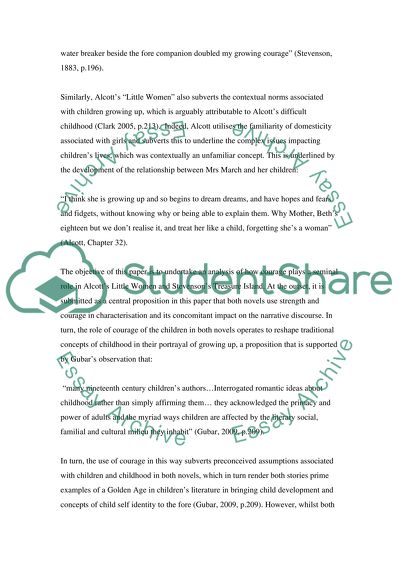Cite this document
(The Role of Courage of Children in Little Women and Treasure Island Literature review, n.d.)
The Role of Courage of Children in Little Women and Treasure Island Literature review. Retrieved from https://studentshare.org/sociology/1573897-discuss-the-role-of-the-courage-of-children-in-both-little-woman-and-treasure-island
The Role of Courage of Children in Little Women and Treasure Island Literature review. Retrieved from https://studentshare.org/sociology/1573897-discuss-the-role-of-the-courage-of-children-in-both-little-woman-and-treasure-island
(The Role of Courage of Children in Little Women and Treasure Island Literature Review)
The Role of Courage of Children in Little Women and Treasure Island Literature Review. https://studentshare.org/sociology/1573897-discuss-the-role-of-the-courage-of-children-in-both-little-woman-and-treasure-island.
The Role of Courage of Children in Little Women and Treasure Island Literature Review. https://studentshare.org/sociology/1573897-discuss-the-role-of-the-courage-of-children-in-both-little-woman-and-treasure-island.
“The Role of Courage of Children in Little Women and Treasure Island Literature Review”. https://studentshare.org/sociology/1573897-discuss-the-role-of-the-courage-of-children-in-both-little-woman-and-treasure-island.


